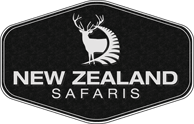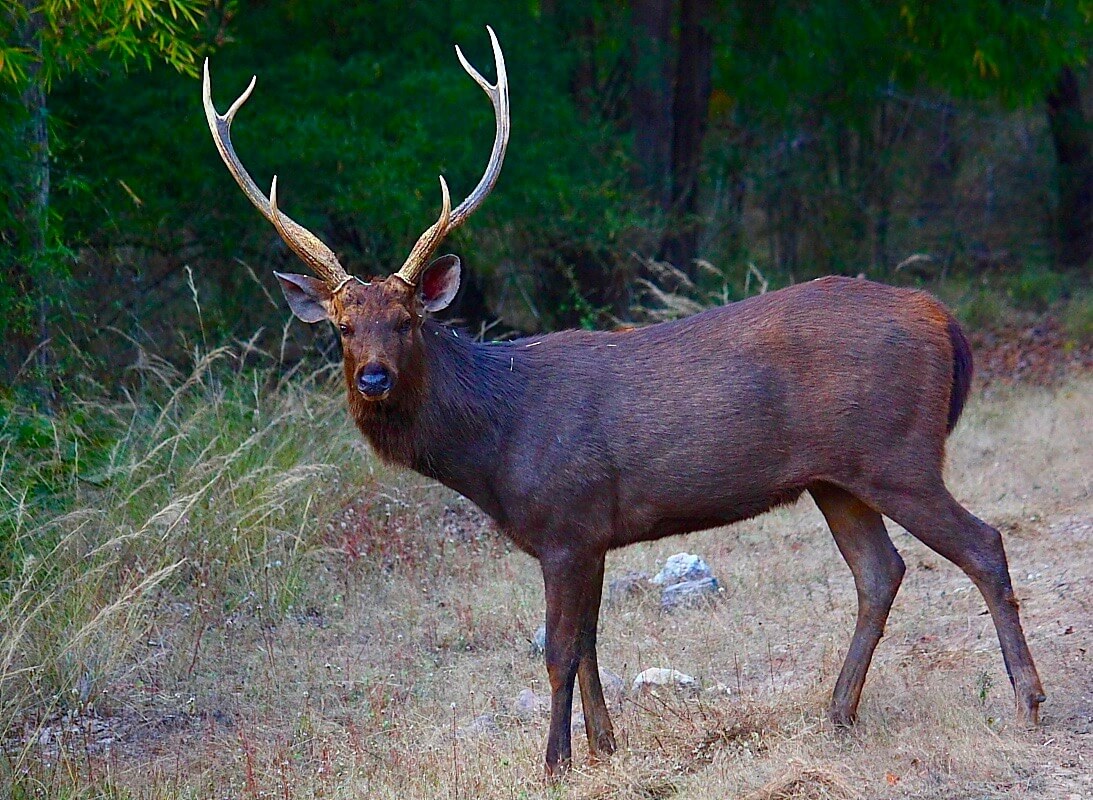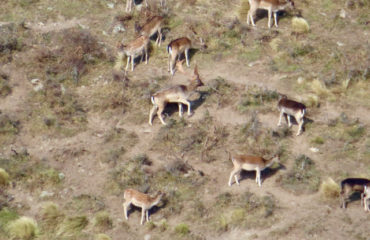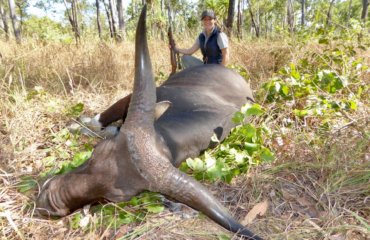What is a sambar deer?
In New Zealand, sambar deer (Cervus unicolor unicolor) are considered an ‘iconic herd’. They are only in the North Island and mostly on private land.
Sambar can be a difficult deer to hunt. As with all hunting the more you can learn about the quarry and the area to be hunted the better the chance of success.
Description:
Size: Males average 1370 mm shoulder height and 245 kg in weight with females smaller at 1150 mm shoulder height and weighing up to 157 kg.
Colour: Uniform brown darkening to almost black in older animals with tan to rust red on the rump. Under parts grey to mid brown.
Antlers: Thick, heavily pearled and normally three tined (brow and trez tines and a terminal tine at the end of the main beam). Antlers cast November to December with new ones grown January to March hardening between June and November.
Social behaviour: Males solitary except during the rut. Young males and females form small groups of 2-5 animals. Feed mainly at night and during the day seek shelter in scrub or forest cover. Form complex trail systems accessing feeding areas from day time cover
Reproduction: The rut can happen any time between late May and December with June to August the usual period. The females, attracted by noise and scent, visit the male for a short period until mating takes place. (Harems are not formed.) Males are not particularly vocal during the rut but are known to emit a short harsh belling noise which is rarely heard by hunters.
Gestation period: Approximately 240- 264 days.
Birthing: March-April or July-September.
Nomenclature: Male = stags. Female = hind. Young = fawn/calf.
Where to hunt
In New Zealand sambar deer are only found in the North Island.
The two main populations of wild sambar deer are found in the Manawatu/Wanganui region and the Bay of Plenty region. Their range in both these areas is mostly on private land – mainly forestry blocks. New Zealand Safaris has exclusive hunting access to some of the most sought after sambar deer properties in the country.
Sambar occupy a variety of habitats from indigenous and exotic forests to wetlands and farmland.
Hunting Tips:
| Characteristic/behaviour | Hunting response |
|---|---|
| Large bodied animals (mature stag 400-500 llb andstand 60+ inches at the shoulder) | A larger rifle calibre with high energy is recommended with Sambar Stags deer known to absorbed shots. Suitable calibers include .270, 7mm, 300 win. |
| Although tending to be unpredictable, within a hunting area sambar will have preferred spots for feeding, hiding etc. | Learning as much as you can about the area being hunted will greatly increase the chances of success. |
| Elusive animals with the ability to exit within close proximity to people without being detected. Often won’t break until a hunter is very close and sometimes crawl rather than run. Can hide in very small patches of vegetation. | Hunt slowly, stopping often and surveying all around. Don’t discount the smallest of vegetation patches eg small clumps of gorse. |
| Once spooked sambar usually won’t go far and as retreating can often be heard making a trumpet like noise. | Listen to retreating animal to gauge where it is heading and after a short time follow. |
| Sambar feed primarily early morning and late evening utilising the cover of darkness but can be found feeding during the day using vegetation cover. | Late evening and early morning hunting is likely to find deer out in the open where as day time hunting will likely find deer in amongst thick vegetation. Hunt the change of light on dark nights. |
| Sambar are attracted to crops for feeding. | New Zealand Safaris hunts exclusively on private free ranging land like that has this feed. |
| Sambar Deer Rut New Zealand | Sambar deer’s main rut is from late May-September, and at times longer. |
| Sambar are very alert to foreign sounds. | With the wind in the right direction stake out feedings areas and wait for sambar to come to you. |




